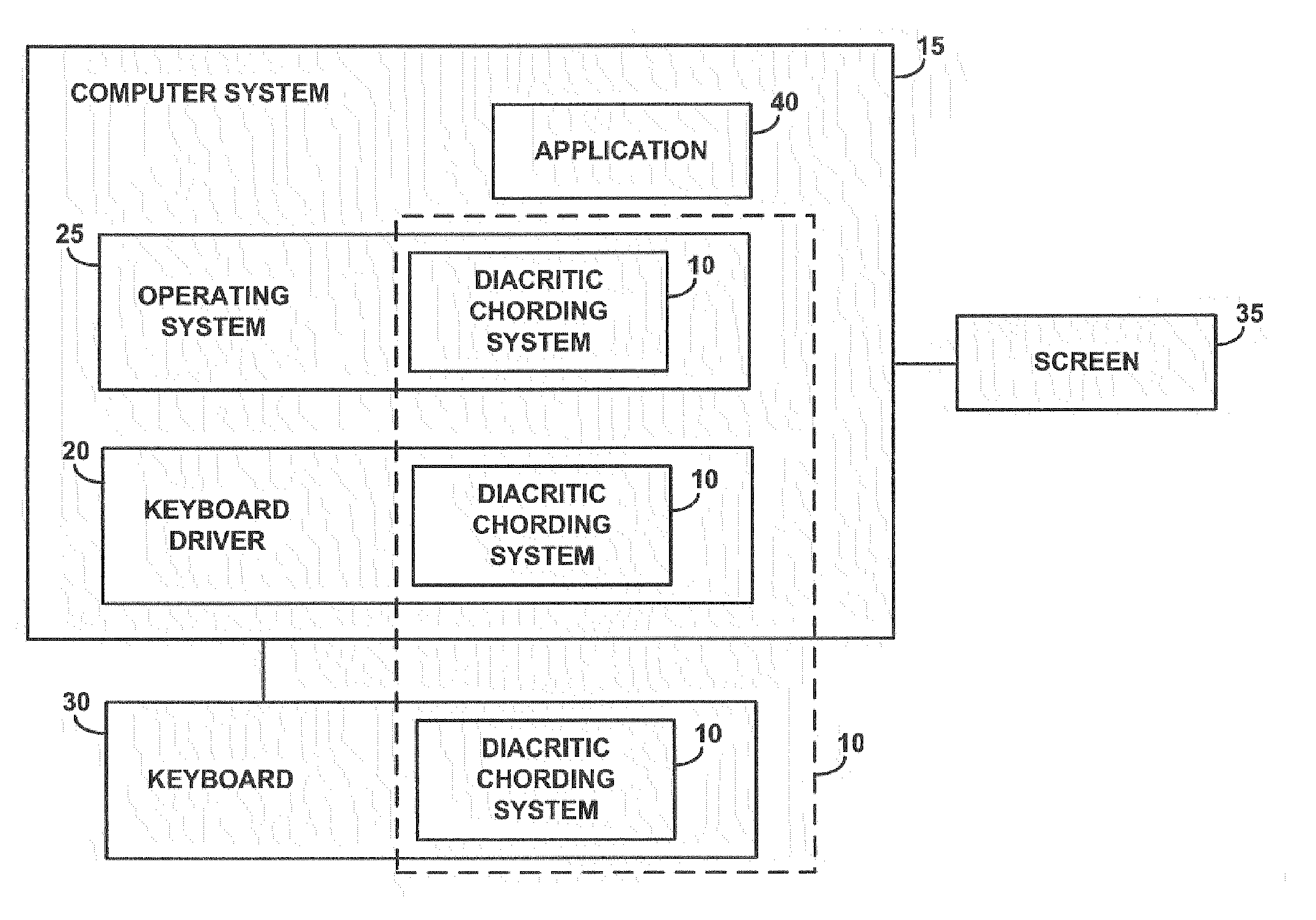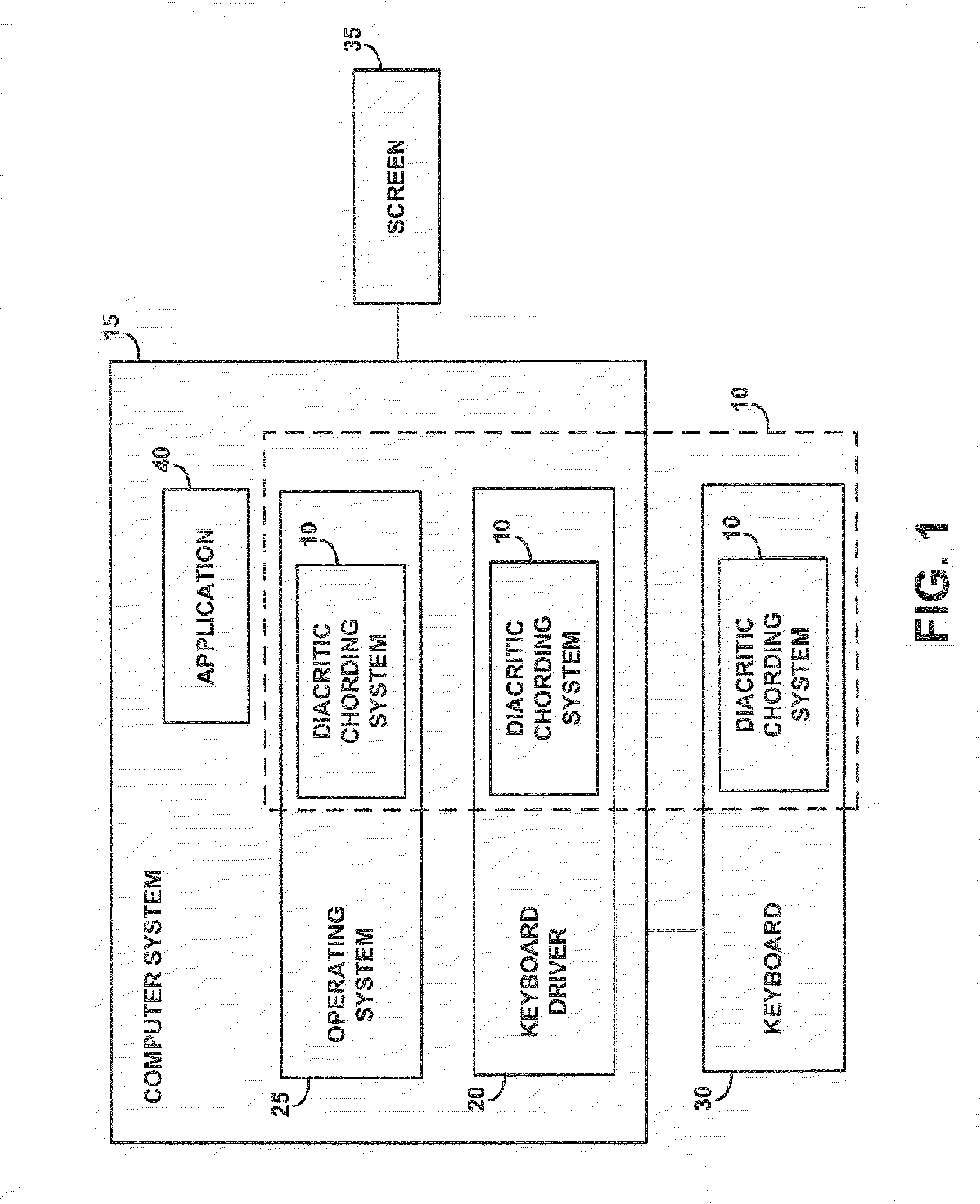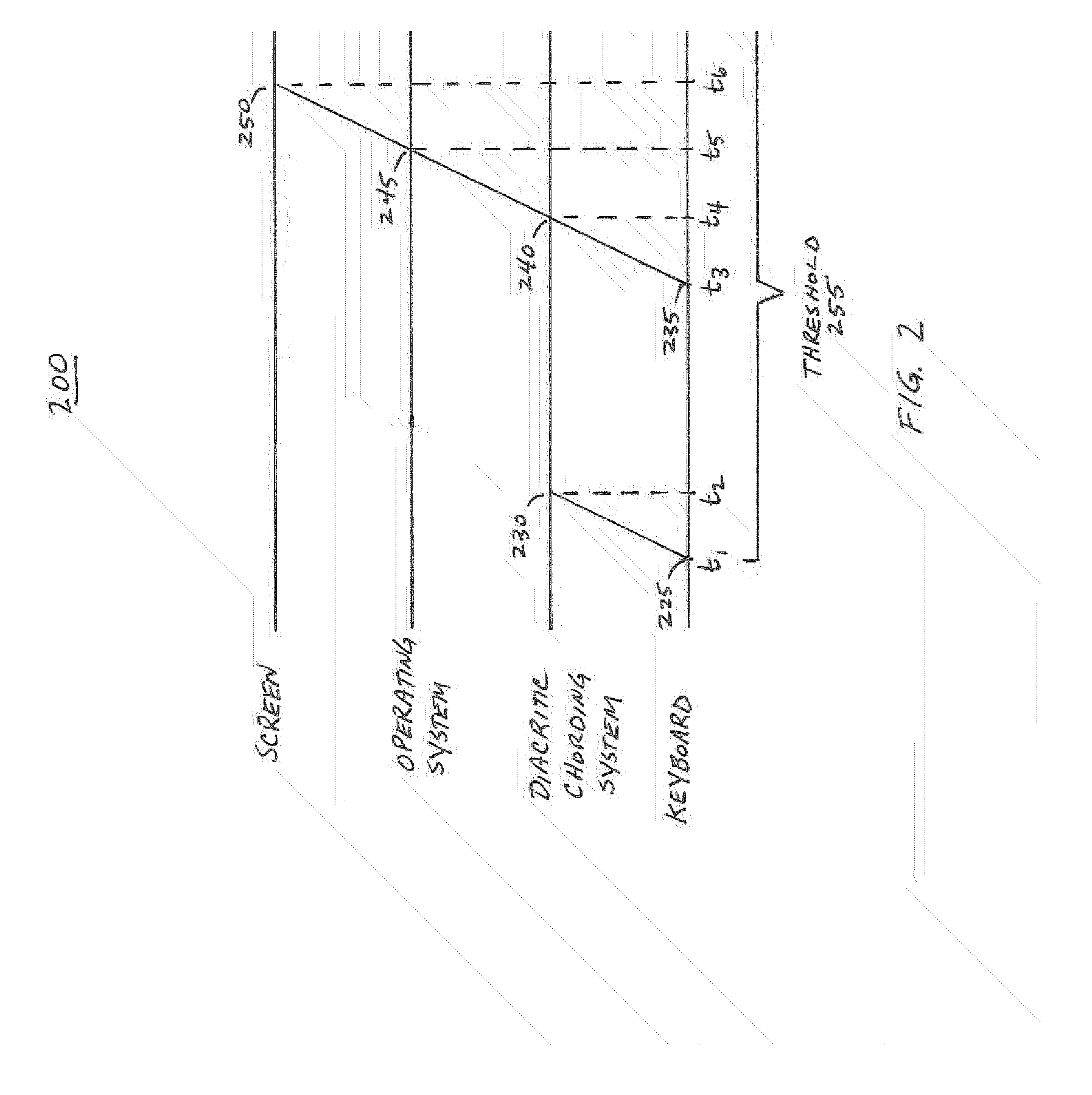System and method for generating language specific diacritics for different languages using a single keyboard layout
a keyboard layout and language technology, applied in the direction of coding, instruments, pulse techniques, etc., can solve the problems of slow keyboarding by users, difficulty in communicating fluently in european languages, and different positions of keyboards, so as to achieve convenient generation of diacritical characters
- Summary
- Abstract
- Description
- Claims
- Application Information
AI Technical Summary
Benefits of technology
Problems solved by technology
Method used
Image
Examples
Embodiment Construction
[0040] The following definitions and explanations provide background information pertaining to the technical field of the present invention, and are intended to facilitate the understanding of the present invention without limiting its scope:
[0041] Diacritic: A mark, such as the cedilla of facade or the acute accent of resume, added to a letter to indicate a special phonetic value or distinguish words that are otherwise graphically identical.
[0042] Diacritical character: a character that comprises a diacritic or is otherwise unique to a language or set of languages such as, for example, the thorn character.
[0043] Diacritic chord: a set of keys pressed concurrently that are used to identify a diacritical character.
[0044]FIG. 1 portrays an exemplary overall environment in which a system, a computer program product, and an associated method (“the system 10”) for producing language specific diacritics for many languages from a standard keyboard layout according to the present invent...
PUM
 Login to View More
Login to View More Abstract
Description
Claims
Application Information
 Login to View More
Login to View More - R&D
- Intellectual Property
- Life Sciences
- Materials
- Tech Scout
- Unparalleled Data Quality
- Higher Quality Content
- 60% Fewer Hallucinations
Browse by: Latest US Patents, China's latest patents, Technical Efficacy Thesaurus, Application Domain, Technology Topic, Popular Technical Reports.
© 2025 PatSnap. All rights reserved.Legal|Privacy policy|Modern Slavery Act Transparency Statement|Sitemap|About US| Contact US: help@patsnap.com



